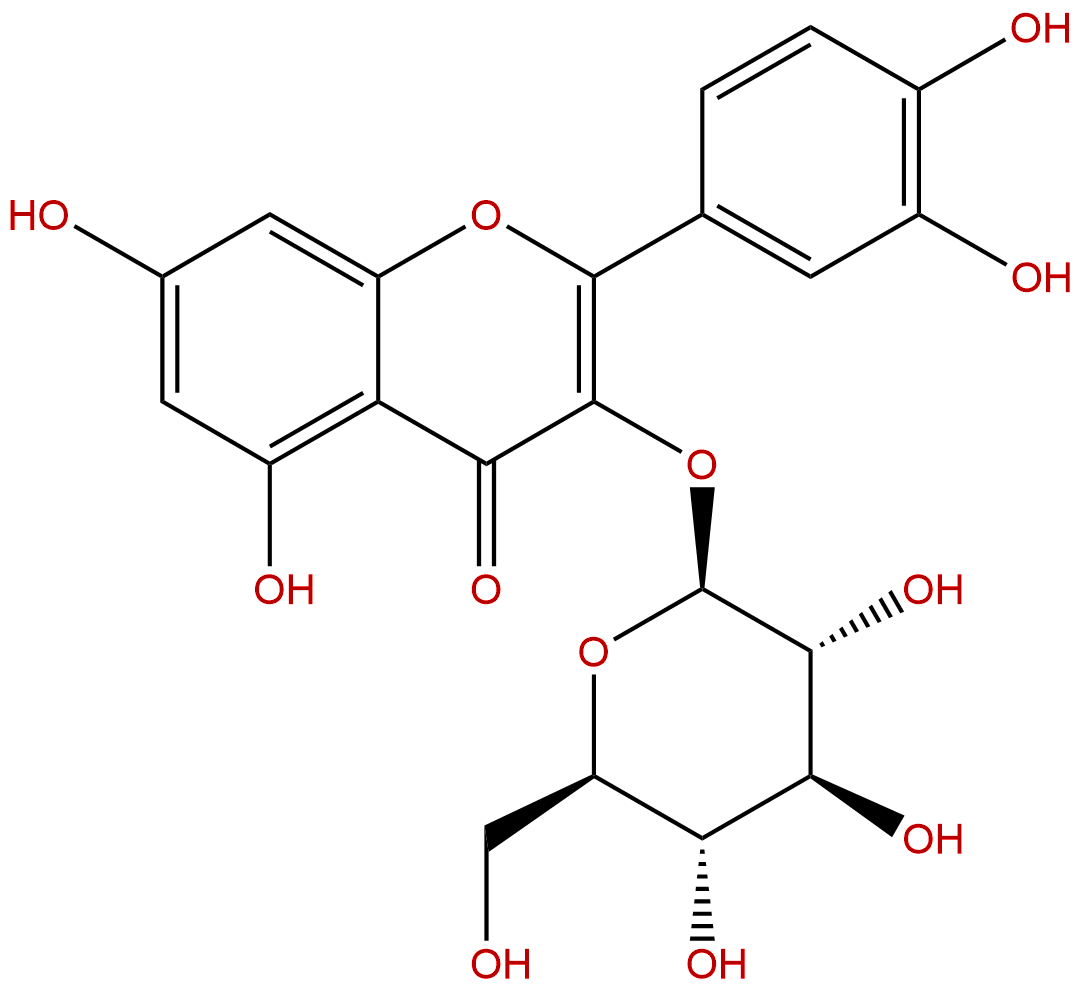Isoquercitrin Descrtption
Synonym name: Isoquercitin; Quercetin 3-glucoside; Hirsutrin; Isoquercitroside ; Isoquercetin
Catalogue No.: BP0793
Cas No.: 482-35-9
Formula: C21H20O12
Mol Weight: 464.379
Botanical Source: Occurs widely in plants
Purity: 98%
Analysis Method: HPLC-DAD
Identification Method: Mass, NMR
Packing: Brown vial or HDPE plastic bottle
Can be supplied from milligrams to grams, up to Kgs.
Available for R&D, food, nutrition and cosmetics.
Inquire for bulk scale.
The flavonoid isoquercitrin (quercetin-3-O-β-d-glucopyranoside) is commonly found in medicinal herbs, fruits, vegetables and plant-derived foods and beverages. Pure isoquercitrin can now be obtained on a large scale by enzymatic rutin hydrolysis with α-l-rhamnosidase. Isoquercitrin has higher bioavailability than quercetin and displays a number of chemoprotective effects both in vitro and in vivo, against oxidative stress, cancer, cardiovascular disorders, diabetes and allergic reactions. Although small amounts of intact isoquercitrin can be found in plasma and tissues after oral application, it is extensively metabolized in the intestine and the liver. Biotransformation of isoquercitrin includes deglycosylation, followed by formation of conjugated and methylated derivatives of quercetin or degradation to phenolic acids and carbon dioxide. The acceptable daily intake of (95%) isoquercitrin and of EMIQ was estimated to be 5.4 and 4.9 mg/kg/day, respectively. Adverse effects of higher doses in rats included mostly (benign) chromaturia; nevertheless some drug interactions may occur due to the modulation of the activity and/or expression of drug metabolizing/transporting systems. With respect to the safety, affordability and beneficial pharmacological activities, highly pure isoquercitrin is a prospective substance for food supplementation.
HPLC of Isoquercitrin



